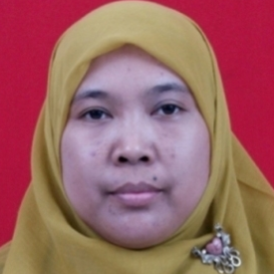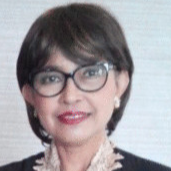International Journal of Information Technology and Computer Science (IJITCS)
IJITCS Vol. 14, No. 1, 8 Feb. 2022
Cover page and Table of Contents: PDF (size: 323KB)
Component Learning Community for Informal Education to Support Culinary Community at Era New Normal Covid-19: A Systematic Literature Review
Full Text (PDF, 323KB), PP.20-31
Views: 0 Downloads: 0
Author(s)
Index Terms
Learning, Community, Informal Education, Culinary Community, Era New Normal Covid-19
Abstract
Informal education will be successful as an alternative for the community because not all people are able to receive formal education. This study uses a qualitative method with a systematic literature review (SLR) technique to look for learning community components in informal education to support learning in the culinary community in the new normal era of Covid-19. The author collects, studies, and analyzes reference sources according to the specified keywords. Found 53 papers from 2002 to 2021 with background authors from academia, industry, and the public sector with reference sources from journals, conferences, white papers, and research reports. Systematic literature review results obtained 6 components of learning community in informal education, namely content, forum, method, technology, figure/layout, and human/social resources. The six components as a reference and the author's first step in the next research through searching for the characteristics of the learning community in the culinary field, then making a learning model of the culinary community. Because of the importance of the learning community component in informal education to help community members share knowledge, solve problems, share common goals and interests among community members.
Cite This Paper
Winanti, Francisca Sestri Goestjahjanti, "Component Learning Community for Informal Education to Support Culinary Community at Era New Normal Covid-19: A Systematic Literature Review", International Journal of Information Technology and Computer Science(IJITCS), Vol.14, No.1, pp.20-31, 2022. DOI: 10.5815/ijitcs.2022.01.03
Reference
[1] M. F. Farahani, M. H. Mirzamohamadi, and N. Noroozi, “The Study on Features of Informal Education in Postmodernism,” Procedia - Soc. Behav. Sci., vol. 136, pp. 559–563, 2014, doi: 10.1016/j.sbspro.2014.05.376.
[2] Kumparan.com, “SMSG: 13 Juta Anak Indonesia Tidak Mengenyam Pendidikan - kumparan.com.” [Online]. Available: https://kumparan.com/millennial/smsg-13-juta-anak-indonesia-tidak-mengenyam-pendidikan-1550565387028583226/full. [Accessed: 23-Apr-2020].
[3] B. Nusantara, “MENCIPTAKAN KOMUNITAS BELAJAR YANG EFFEKTIF & MEMOTIVASI – TFI,” Bina Nusantara University, 2018. [Online]. Available: http://student-activity.binus.ac.id/tfi/2018/12/menciptakan-komunitas-belajar-yang-effektif-memotivasi/. [Accessed: 23-Apr-2020].
[4] H. Haron, NoorAziz, N. Hida, and A. Harun, “A Conceptual Model Participatory Engagement Within E-learning Community A Conceptual Model Participatory Engagement Within E-learning,” Procedia Comput. Sci., vol. 116, pp. 242–250, 2017, doi: 10.1016/j.procs.2017.10.046.
[5] J. E. Lee, “A Formative Intervention on Mobile Learning Community,” Procedia - Soc. Behav. Sci., vol. 191, pp. 68–76, 2015, doi: 10.1016/j.sbspro.2015.04.655.
[6] C. Giglio and R. Palmieri, “Analyzing Informal Learning Patterns in Facebook Communities of International Conferences,” Procedia - Soc. Behav. Sci., vol. 237, no. June 2016, pp. 223–229, 2017, doi: 10.1016/j.sbspro.2017.02.067.
[7] W. Techavijitsarn, M. Kovitaya, and A. Ratana-Ubol, “The Development of a Community Learning Model for Self-Management in Conserving Community Forests,” Procedia - Soc. Behav. Sci., vol. 191, pp. 2325–2328, 2015, doi: 10.1016/j.sbspro.2015.04.504.
[8] Winanti, F. L. Gaol, Meyliana, and H. Prabowo, “A Survey Positive Engagement of Learning Community for Informal Education to Support Community,” Mater. Sci. Eng., vol. 662, 2019, doi: 10.1088/1757-899X/662/2/022024.
[9] N. Ordabayeva and R. Srinivasan, “The effects of salience of the sound of food on consumption,” Appetite, 2019, doi: 10.1016/j.appet.2019.03.030.
[10] A. Draghici, A.-D. Popescu, G. Fistis, and C. Borca, “Behaviour Attributes that Nurture the Sense of E-learning Community Perception,” Procedia Technol., vol. 16, pp. 745–754, 2014, doi: 10.1016/j.protcy.2014.10.024.
[11] S. Molano and A. Polo, “Social Network Analysis in a Learning Community,” Procedia - Soc. Behav. Sci., vol. 185, no. 57, pp. 339–345, 2015, doi: 10.1016/j.sbspro.2015.03.381.
[12] X. Liu and J. Zhang, “Foreign Language Learning through Virtual Communities,” Energy Procedia, vol. 17, pp. 737–740, 2012, doi: 10.1016/j.egypro.2012.02.165.
[13] A. Strunga, “The Integration of Virtual Learning Communities into Universities’ Knowledge Management Models,” Procedia - Soc. Behav. Sci., vol. 197, no. February, pp. 2430–2434, 2015, doi: 10.1016/j.sbspro.2015.07.306.
[14] R. Daud, Z. A. Jalil, and M. N. F. M.Gunawan, “Community College Students’ Perception Towards Digital Learning In Malaysia,” Procedia - Soc. Behav. Sci., vol. 195, pp. 1798–1802, 2015, doi: 10.1016/j.sbspro.2015.06.389.
[15] L. M. Tahir, M. N. H. M. Said, M. F. Ali, N. A. Samah, K. Daud, and T. H. Mohtar, “Examining the Professional Learning Community Practices: An Empirical Comparison from Malaysian Universities Clusters,” Procedia - Soc. Behav. Sci., vol. 97, pp. 105–113, 2013, doi: 10.1016/j.sbspro.2013.10.210.
[16] Arifur Rahaman, Sabrina Tasnim, Md Sohag Hossain Majumdar, Emam Hossen, Md Rafiqul Islam (Rafiq), " A Comprehensive Study on Excessive Mobile Phone Use and Preventive Measures", International Journal of Modern Education and Computer Science, Vol.12, No.3, pp. 33-39, 2020.
[17] C. Boonaree and K. Tuamsuk, “Community Learning Resources Management Practices in Thai Buddhist Monasteries,” Procedia - Soc. Behav. Sci., vol. 73, pp. 175–180, 2013, doi: 10.1016/j.sbspro.2013.02.038.
[18] S. Magistretti, C. Dell’Era, and A. Messeni Petruzzelli, “How intelligent is Watson? Enabling digital transformation through artificial intelligence,” Bus. Horiz., vol. 62, no. 6, pp. 819–829, 2019, doi: 10.1016/j.bushor.2019.08.004.
[19] S. Nambisan, K. Lyytinen, A. Majchrzak, and M. Song, “Digital innovation management: Reinventing innovation management research in a digital world,” MIS Q. Manag. Inf. Syst., vol. 41, no. 1, pp. 223–238, 2017, doi: 10.25300/MISQ/2017/411.03.
[20] T. Savino, A. Messeni Petruzzelli, and V. Albino, “Search and Recombination Process to Innovate: A Review of the Empirical Evidence and a Research Agenda,” Int. J. Manag. Rev., vol. 19, no. 1, pp. 54–75, 2017, doi: 10.1111/ijmr.12081.
[21] E. Soykan, N. Gunduz, and M. Tezer, “Perceptions of the Teacher Candidates Towards Community Service Learning,” Procedia - Soc. Behav. Sci., vol. 197, no. February, pp. 2468–2477, 2015, doi: 10.1016/j.sbspro.2015.07.314.
[22] Y. Buntat, N. A. Puteh, S. H. Azeman, A. N. M. Nasir, N. Iahad, and M. A. Aziz, “The Need of Lifelong Learning towards Learning Community Development in Malaysia,” Procedia - Soc. Behav. Sci., vol. 93, pp. 1541–1545, 2013, doi: 10.1016/j.sbspro.2013.10.079.
[23] B. Mehra and W. Robinson, “The Community Engagement Model in Library and Information Science Education: A Case Study of a Collection Development and Management Course,” J. Educ. Libr. Inf. Sci., vol. 50, no. 1, p. 15, 2009.
[24] N. I. B. Adnan and Z. Tasir, “Online social learning model,” Proc. - 2014 Int. Conf. Teach. Learn. Comput. Eng. LATICE 2014, pp. 143–144, 2014, doi: 10.1109/LaTiCE.2014.33.
[25] I. F. Liu, M. C. Chen, Y. Sun, D. Wible, and C. H. Kuo, “Assessment of an online learning community from technology acceptance model in education,” Proc. - 8th IEEE Int. Conf. Adv. Learn. Technol. ICALT 2008, pp. 222–224, 2008, doi: 10.1109/ICALT.2008.103.
[26] C. Tu et al., “A Unified Framework for Community Detection and Network Representation Learning,” IEEE Transactions on Knowledge and Data Engineering. 2018, doi: 10.1109/TKDE.2018.2852958.
[27] F. Gavrel, I. Lebon, and T. Rebière, “Formal education versus learning-by-doing: On the labor market efficiency of educational choices,” Econ. Model., vol. 54, pp. 545–562, 2016, doi: 10.1016/j.econmod.2016.01.006.
[28] S. L. Tudor, “Formal – Non-formal – Informal in Education,” Procedia - Soc. Behav. Sci., vol. 76, pp. 821–826, 2013, doi: 10.1016/j.sbspro.2013.04.213.
[29] T. Pelajaran, “Pengertian Pendidikan Formal : Ciri, Tujuan, Fungsi, Manfaat dan Contohnya – Pelajaran Sekolah Online,” Team Pelajaran.co,id, 2019. [Online]. Available: https://www.pelajaran.co.id/2019/22/pendidikan-formal.html. [Accessed: 28-Apr-2020].
[30] Kemdikbud, .: “Pusat Data dan Teknologi Informasi :.,” http://statistik.data.kemdikbud.go.id/. [Online]. Available: http://statistik.data.kemdikbud.go.id/. [Accessed: 16-Jul-2021].
[31] “Terdapat 157 Ribu Siswa Putus Sekolah pada Tahun Ajaran 2019/2020 | Databoks.” [Online]. Available: https://databoks.katadata.co.id/datapublish/2021/01/11/terdapat-157-ribu-siswa-putus-sekolah-pada-tahun-ajaran-20192020. [Accessed: 16-Jul-2021].
[32] Maxmanroe, “Pendidikan INFORMAL: Pengertian, Fungsi, Ciri-Ciri, dan Contohnya,” 2020. [Online]. Available: https://www.maxmanroe.com/vid/umum/pendidikan-informal.html. [Accessed: 28-Apr-2020].
[33] I. Maksumic, D. Radosav, I. Hamulic, E. Junuz, and N. Bijedic, “Modeling SNA Result to Improve Learning Community,” Procedia - Soc. Behav. Sci., vol. 64, pp. 52–57, 2012, doi: 10.1016/j.sbspro.2012.11.007.
[34] M.-A. Szitar, “Learning about Sustainable Community Development,” Procedia - Soc. Behav. Sci., vol. 116, pp. 3462–3466, 2014, doi: 10.1016/j.sbspro.2014.01.784.
[35] H. Cheng and F. Yidong, “Study on model of learning community knowledge management based on grid computing,” Proceeding Int. Conf. e-Education Entertain. e-Management, ICEEE 2011, pp. 167–170, 2011, doi: 10.1109/ICeEEM.2011.6137776.
[36] Y. Lina, “Constructing Networked Learning Community Based On the Education Knowledge Management Platform,” Procedia Environ. Sci., vol. 12, no. Icese 2011, pp. 1324–1328, 2012, doi: 10.1016/j.proenv.2012.01.429.
[37] T. Ounvichit and B. Yoddumnern-Attig, “Community dialogs on the probabilities of community-based mangrove institution,” Kasetsart J. Soc. Sci., vol. 39, no. 3, pp. 365–373, 2018, doi: 10.1016/j.kjss.2018.07.001.
[38] K. Yamashita and H. Yasueda, “Project-based learning in out-of-class activities: Flipped learning based on communities created in real and virtual spaces,” Procedia Comput. Sci., vol. 112, pp. 1044–1053, 2017, doi: 10.1016/j.procs.2017.08.108.
[39] P. Hudson, S. Hudson, B. Gray, and R. Bloxham, “Learning About Being Effective Mentors: Professional Learning Communities and Mentoring,” Procedia - Soc. Behav. Sci., vol. 93, pp. 1291–1300, 2013, doi: 10.1016/j.sbspro.2013.10.031.
[40] Winanti, Meyliana, F. L. Gaol, H. Prabowo, and F. S. Goestjahjanti, “Exploration of Key Success Factors for Determining Technological Component in Learning at Culinary Community: A Systematic Literature Review,” TALE 2019 - 2019 IEEE Int. Conf. Eng. Technol. Educ., 2019, doi: 10.1109/TALE48000.2019.9225996.
[41] “Apa Itu New Normal dan Bagaimana Penerapannya Saat Pandemi Corona? - Tirto.ID.” [Online]. Available: https://tirto.id/apa-itu-new-normal-dan-bagaimana-penerapannya-saat-pandemi-corona-fCSg. [Accessed: 01-Jun-2021].
[42] “Arti New Normal Indonesia: Tatanan Baru Beradaptasi dengan COVID-19 - Tirto.ID.” [Online]. Available: https://tirto.id/arti-new-normal-indonesia-tatanan-baru-beradaptasi-dengan-covid-19-fDB3. [Accessed: 03-Jul-2021].
[43] “Pedoman The New Normal dari WHO di Tengah Pandemi Corona.” [Online]. Available: https://www.halodoc.com/artikel/pedoman-the-new-normal-dari-who-corona. [Accessed: 04-Jul-2021].
[44] B. Kitchenham, O. Pearl Brereton, D. Budgen, M. Turner, J. Bailey, and S. Linkman, “Systematic literature reviews in software engineering - A systematic literature review,” Inf. Softw. Technol., vol. 51, no. 1, pp. 7–15, 2009, doi: 10.1016/j.infsof.2008.09.009.
[45] C. Okoli, “A Guide to Conducting a Systematic Literature Review of Information Systems Research,” SSRN Electron. J., no. May 2010, pp. 7–9, 2010, doi: 10.2139/ssrn.1954824.
[46] Iman Tikito, Nissrine Souissi, "Meta-analysis of Systematic Literature Review Methods", International Journal of Modern Education and Computer Science, Vol.11, No.2, pp. 17-25, 2019.
[47] J. Webster and R. T. Watson, “Analyzing the Past to Prepare for the Future: Writing a Literature Review.,” MIS Q., vol. 26, no. 2, pp. xiii–xxiii, 2002, doi: 10.1.1.104.6570.
[48] M. Oztok, “Tacit knowledge in online learning : community , identity , and social capital,” Technol. Pedagog. Educ., vol. 22, no. 1, pp. 21–36, 2012, doi: 10.1080/1475939X.2012.720414.
[49] B. Wilson, “Learning city-regions revisited: A new way forward,” J. Contemp. Issues Bus. Gov., vol. 20, no. 1, p. 77, 2014, doi: 10.7790/cibg.v20i1.21.
[50] Z. Liu, X. Li, L. Qiao, and D. Khan, “A cross-region transfer learning method for classification of community service cases with small datasets ,” Knowledge-Based Syst., no. xxxx, p. 105390, 2019, doi: 10.1016/j.knosys.2019.105390.
[51] J. R. Anderson, Concepts of Food Sustainability, no. 2008. Elsevier, 2018.
[52] Winanti, F. L. Gaol, T. A. Napitupulu, H. Soeparno, and A. Trisetyarso, “Learning Framework in the Industrial Age 4.0 in Higher Education,” in 1st 2018 Indonesian Association for Pattern Recognition International Conference, INAPR 2018 - Proceedings, 2019, doi: 10.1109/INAPR.2018.8627039.
[53] J. F. Wang, M. Y. Chen, L. J. Feng, and J. J. Yue, “The Construction of Enterprise Tacit Knowledge Sharing Stimulation System Oriented to Employee Individual,” Procedia Eng., vol. 174, pp. 289–300, 2017, doi: 10.1016/j.proeng.2017.01.139.
[54] K. Sue, M. Barrett, and T. Jones, “Defining Learning Communities,” Qualitative Research and Case Study Applications in Education, no. March. pp. 27–43, 2012.
[55] N. Waiyahong, “The Use of ‘Facebook’ to Build an LIS Student Learning Community,” Procedia - Soc. Behav. Sci., vol. 147, pp. 98–103, 2014, doi: 10.1016/j.sbspro.2014.07.124.
[56] Y. George, W. College, and C. Town, “Facilitating informal education and community learning,” 2010.
[57] R. Siri and O. S. Chantraprayoon, “Local community participatory learning with a nature interpretation system: A case study in Ban Pong, Sansai district, Chiang Mai, Thailand,” Kasetsart J. Soc. Sci., vol. 38, no. 2, pp. 181–185, 2017, doi: 10.1016/j.kjss.2016.04.003.

